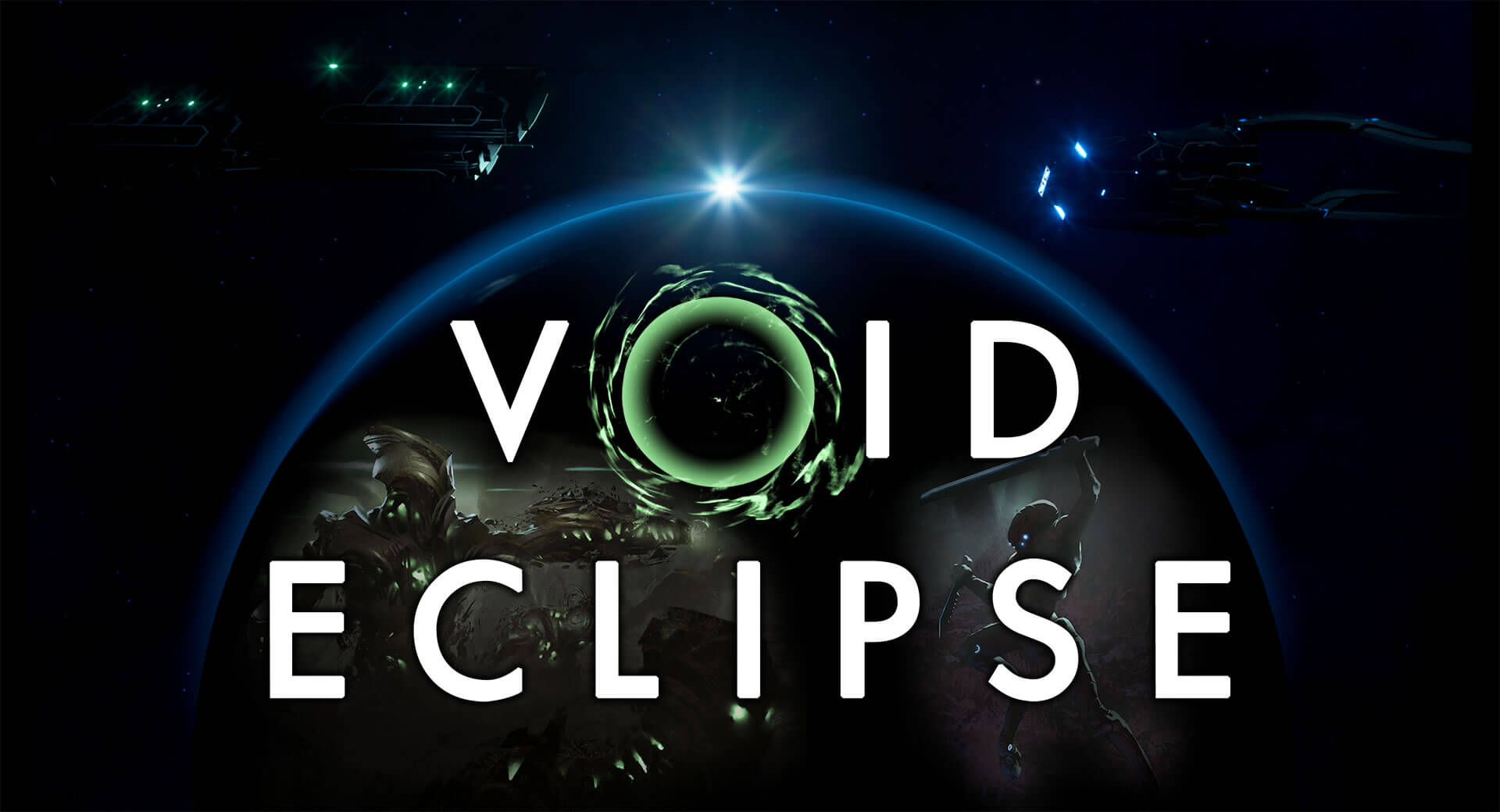Void Eclipse, the debut title from Tau Ceti Studios, presents an exciting tactical combat system blended with a 4X strategic layer in a creepy sci-fi setting. The story campaign follows a military android reactivated to fight a galactic menace, but who has little memory of their past and a healthy distrust of their saviors. The game comes with much to recommend it, and fans of indie strategy games should definitely put the five-person team at Tau Ceti on their radar because of it.
The biggest standout in Void Eclipse is the combat system, which honestly could have been the whole game if the developers had chosen to go that route. Players deploy units to their half of an 8×4 rectangular grid, taking advantage of a diverse suite of abilities to destroy the opposing army. Units can’t move and attack on the same turn, so getting an advantageous position before engaging is of supreme importance. Players can deploy up to four of their units at the beginning of the battle, with the rest being held in reserve. These reserves can be deployed up to two at a time on any turn after the first.
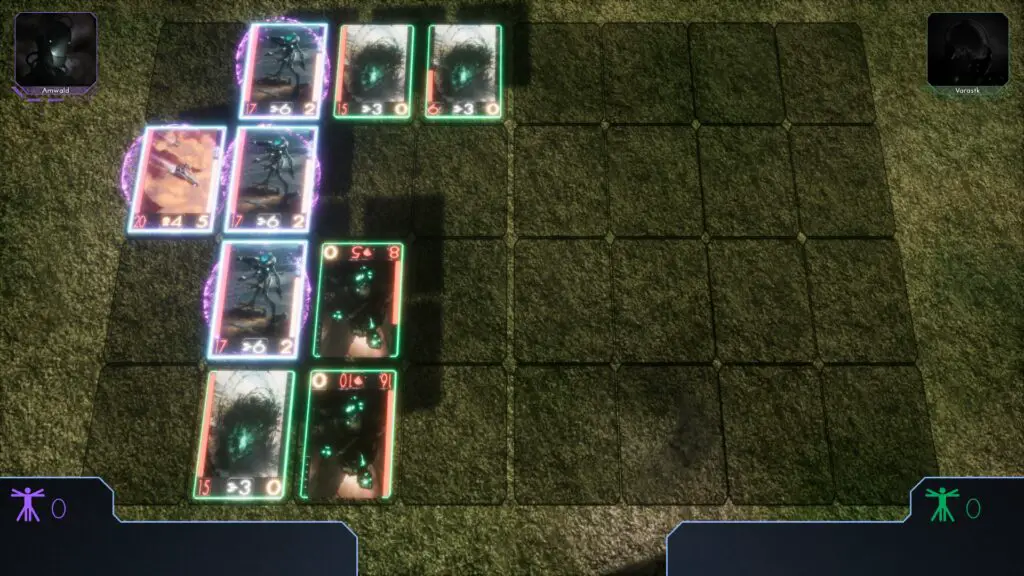
Most units have enough hit points that they can survive an attack or two, but the key to keeping your soldiers alive is mastering the game’s myriad forms of defense. With a few exceptions, units have some amount of Armor, which directly reduces the amount of damage taken from an attack.
Explosive damage, dealt by some abilities and certain units which have it innately, permanently reduces the Armor if its target, making them susceptible to later strikes. Shields absorb damage from ranged attacks completely, but are destroyed permanently after a few hits, and also do nothing against melee attacks.
There are units that gain additional capabilities while shielded, so breaking an enemy’s Shield can also blunt its offensive capacity. Cloaked units reduce all incoming damage to 1 and are invisible to the enemy player (though this can be circumvented simply by hovering over a cloaked target). Cloaks expire after a set number of turns, but can be reactivated with the right abilities.
Tactical gameplay in Void Eclipse gets especially compelling when unit abilities are thrown into the mix. Most units have several, and they allow players to bypass defensive, swap unit positions, apply buffs, and so on. There are many abilities that can be used in addition to the user’s single move or attack action in a turn, granting plenty of versatility to the player’s tactics.
The most powerful abilities cost Resolve, a mana-like resource that builds up each turn and is shared by the entire army. The tutorial is even kind enough to show you a powerful combo, using an Initiate’s Explosive Rounds to zero an enemy’s Armor, then firing Anti-Infantry Rounds, which kills a defenseless unit, to destroy the now-unarmored enemy.
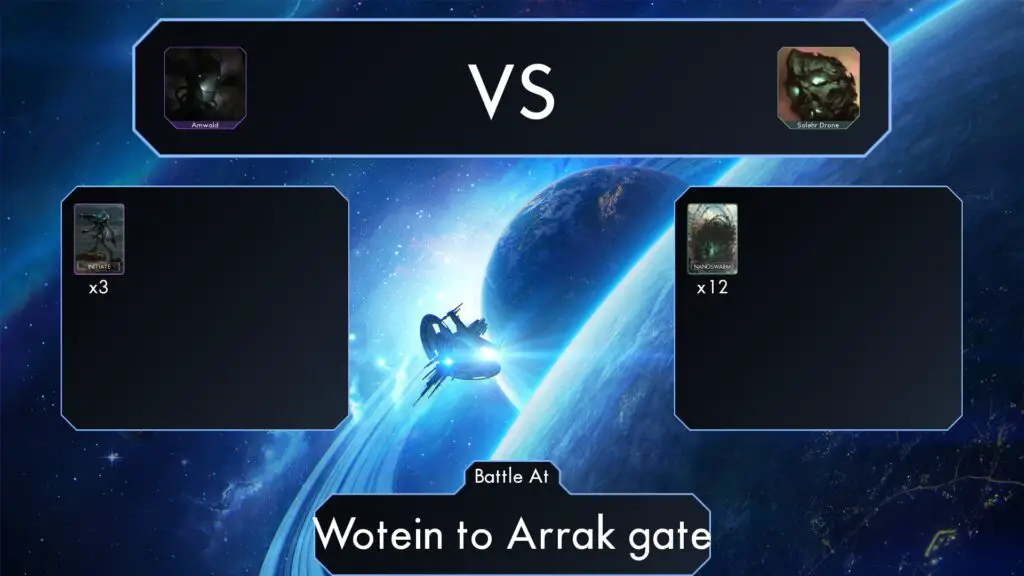
Void Eclipse’s combat system is billed as being card-based, but it’s really more of a positional strategy game. Lacking any sort of hand or deck management, the units are only “cards” in that they are presented as rectangular icons. They could be presented as rendered models or anything else without changing the core mechanic. It’s still a great combat system, but players who are expecting a round of Hearthstone in Space every time they invade a planet have something else coming.
The 4X layer of the game is very bare-bones, and largely serves as a means of presenting the game’s storyline. The biggest decision points are when to build a new fleet and where to send it, as each fleet is a self-contained army that can’t be modified once launched. Occupied planets provide minerals and energy each turn, as well as increase the player’s supply which limits how many units they can have at once.
Each planet has a limited amount of resources and will stop producing once it has been fully depleted, so a successful player will always be in search of new worlds to visit. The resources from planets are used to recruit new units on planets and form them into fleets. Minerals are the basic money resource, required not only for recruiting units but for deploying fleets – and each fleet is more expensive than the one before it, regardless of how many units are in it. Energy starts the campaign with little to do, but becomes more important as the story progresses, as each unit outside of the Initiate (the basic infantryman) must be re-unlocked with Energy in each new mission.
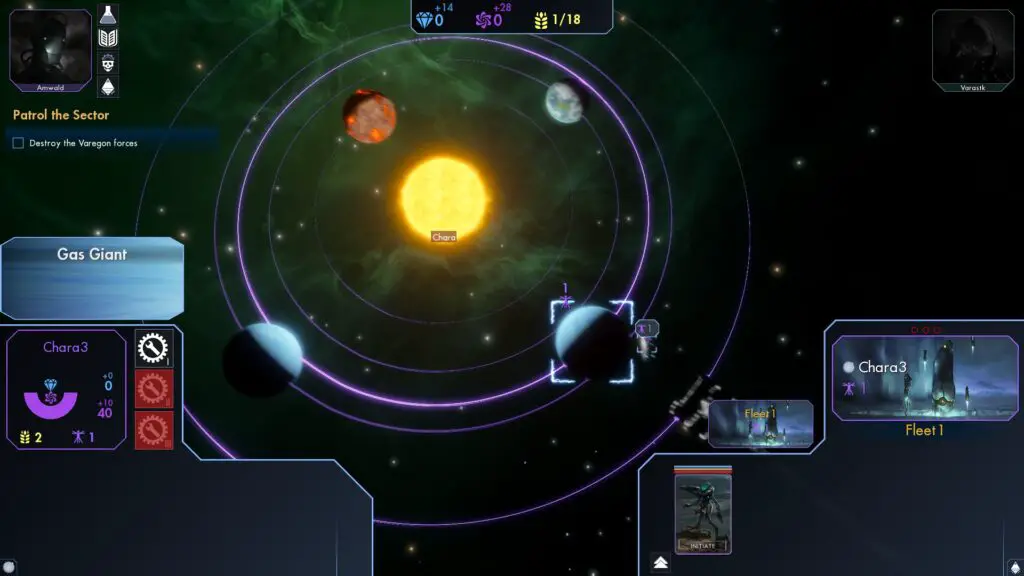
Over the course of the campaign, the player will gain XP, which can be used to unlock the abilities of the units they have available. These upgrades are permanent and carry over from mission to mission, so once a unit is fully upgraded it stay that way forever. Damage dealt to units is also permanent, so a unit that has taken hits, or perhaps lost its Armor or Shield, will stay that way until the end of the mission or until it finally falls in combat. Two friendly fleets cannot fight in the same battle, but they can attack the same target in succession. If one fleet fails to defeat an opponent, a backup can finish the job in separate combat.
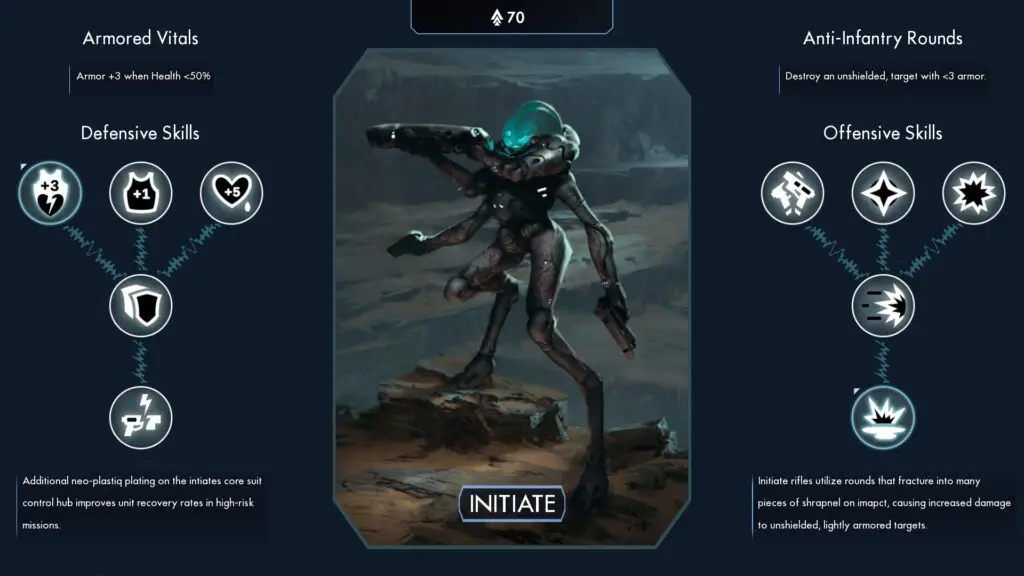
In terms of presentation, Void Eclipse is a visual treat. The character and unit designs are highly evocative, and the player immediately knows that this galaxy is one that has no place for humans as we know them. The game’s combat animations are very well-executed and help drive home the setting’s portrayal of highly advanced by soulless technology. The soundtrack mixes the soaring themes of more standard military sci-fi with a feeling of creeping dread, bringing the whole thing together into a universe that begs to be explored further.
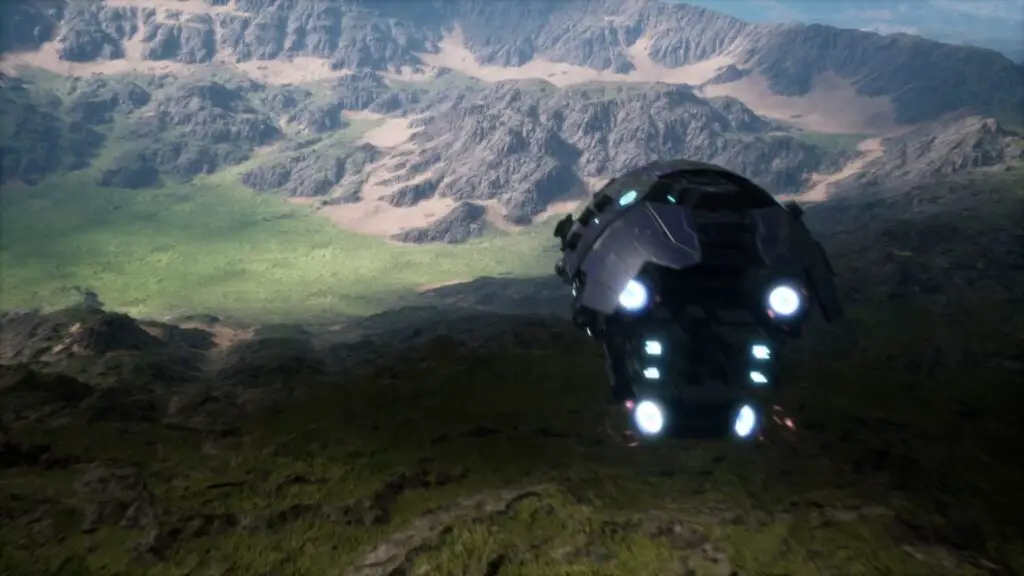
For all its strengths, the game does have some glaring weaknesses. The UI leaves a lot to be desired; on the strategic map moving between systems and fleets is clunky, and in tactical battles, the lack of tooltips can trip up newer players. The game also doesn’t have an autoresolve function, forcing players to grind out even the most one-sided of battles. This includes watching the opening animation of the player’s ship landing at the battlefield which, while good-looking, slows the game down after the twentieth time.
Looking at the credits, it seems one person did the game design, programming, visual effects, and UI all themself. That’s a lot of work, so hopefully, this release will allow Tau Ceti to bring on some more people and spread the load.
For a game with such a robust combat system, the lack of multiplayer feels like a missed opportunity. Void Eclipse could make for a very solid head-to-head game, especially if more playable factions are added down the road. A draft mechanic would work very well for the game, especially if it’s being presented as a card battler.
Overall, Void Eclipse is proving to be a very good tactical game with an okay 4X game tacked on. The setting and production values make a space setting worth getting lost in, and it’s going to be exciting to see where Tau Ceti goes next after this impressive start. If you have any war stories you’d like to share from your time with Void Eclipse, be sure to let us know!


